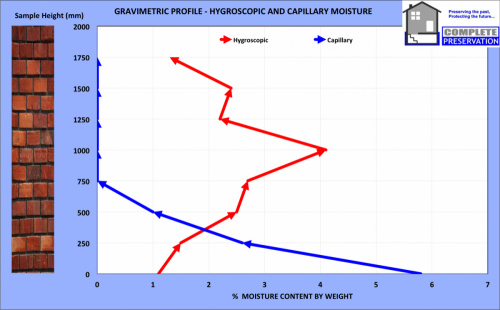
Rising damp & the facts you need to know
By: admin | Posted on: August 13, 2019
This is some very basic stuff showing diagrams that visually explain damp issues that just drilling a new damp proof will not solve. It is well documented in BRE Digest 245, British Standard BS 6576, British Standard BS 5250, THAT YOU HAVE TO FIND THE CAUSE OF THE RISING DAMP, ALONG WITH CORRECT DIAGNOSIS BEFORE YOU CAN MOVE FORWARD WITH A REPAIR.
I have massive issues with Estate Agents that offer their damp expert to carry out a free pre purchase damp and timber survey, and basically give a quote to do the cheapest job. The quote is referred to as a ‘report’ and is presumed to be worth something along with the Mickey mouse guarantee. These are often a couple of pages, with no mention of any possible defects or the actual cause of the damp. These are worthless, and the works always mask the visible defects, and subsequent damp issues normally occur.
If you have a property that is cavity construction it is essential that you have to eliminate some of the possible causes of rising damp. It is unlikely that the physical damp proof course has failed, or broken down. If you have a solid wall property, these below pictures can also be relevant in some cases especially if there is a physical damp proof course, or a chemical damp proof course has been installed.
The below picture shows a basic issue, this being debris in the cavity that has bridged the damp proof course.

The below shows bridging of the damp proof course by the path.

The below shows bridging of the damp proof course by the plaster.
The below shows bridging of the damp proof course by the external render.

The below shows bridging over the damp proof course by mortar pointing.

The below shows bridging of the damp proof course by the screed.

Some facts…. lots of damp proofing experts claim to work to BS 6576:2005 (This is the British Standard). BS 6576:2005 Code of practice for diagnosis of rising damp in walls of buildings and installation of chemical damp-proof courses. MOST OF THEM DONT, please read the below and read some facts published in the British Standard.


I have highlighted NOTE 2 BELOW.… it clearly states that a damp meter gives a qualitative reading. Gravimetric tests give more detail, this will tell you exactly what is going on. Chemical tests, this is a speedy meter or a carbide meter will only show a total moisture content. Gravimetrics differentiate between hygroscopic and free moisture contents….. this is the only way we carry out our surveys.

Please see the facts in BS 5250 regarding rising damp.




BS 5250 also nearly states that the gravimetric method gives the most reliable results.
BRE Digest 245 states the below.






Again BRE Digest 245 recommends that plaster/mortar samples are taken to determine what is exactly going on.
What do you do if you have a damp issue? A damp survey should be more an investigation, and you should expect to pay for it. If your damp surveyor doesn’t eliminate some very basic issues you will get a quote for a new damp proof course.
Damp meters are brilliant but they beep even when the wall is dry, if some hygroscopic salts are present, and they can’t tell you if the wall is damp by free moisture or hygroscopic salts.
All of the British Standards recommend that gravimetrics should be used to determine what is actually going on.
If you need advice regarding a damp survey, please give us a shout.
Top tip
You need to ask your damp surveyor for an invasive damp survey where as a minimum a carbide meter is used, or ideally gravimetric sampling. Most damp surveyors will only offer non invasive damp surveys, which is then an opinion not based on any data in regards to the moisture content of the wall. Drains, leaking pipes, bridging of the damp proof course are common defects that need eliminating as per the above screenshots in the British Standards. These will need to be inspected. Have a look at some interesting videos in the video gallery section of the website.

